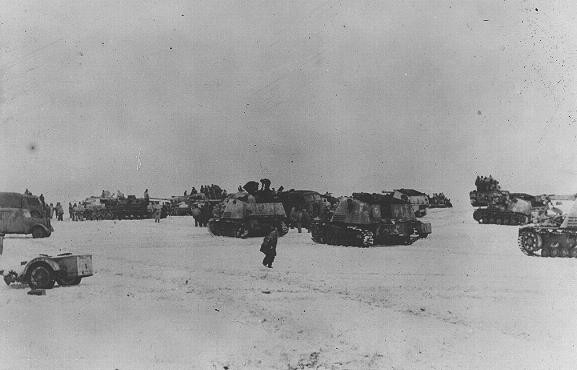
World War II in Eastern Europe, 1942–1945
German Domination
Until the winter of 1942-1943, the German army was victorious in an almost unbroken chain of battlefield successes. Europe lay under German domination.
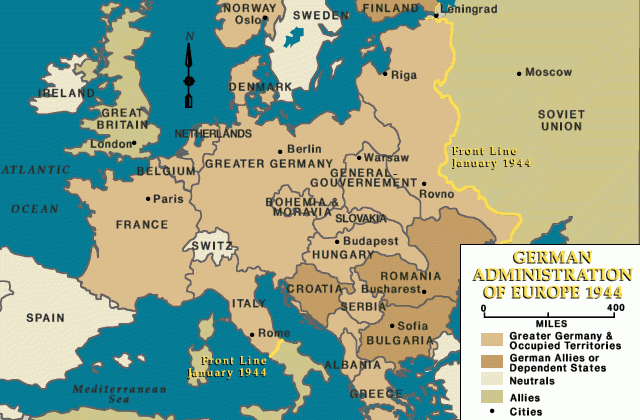
After a successful German advance in summer 1942, the battle for the city of Stalingrad in late 1942 proved a turning point. Soviet forces halted the German advance at Stalingrad on the Volga River and in the Caucasus.
After this defeat, German troops were forced on the defensive, beginning the long retreat westward that was to end with Nazi Germany's surrender in May 1945, some three years later.
Soviet forces launched a counteroffensive against the Germans arrayed at Stalingrad in mid-November 1942. They quickly encircled an entire German army, more than 220,000 soldiers. In February 1943, after months of fierce fighting and heavy casualties, the surviving German forces—only about 91,000 soldiers—surrendered.
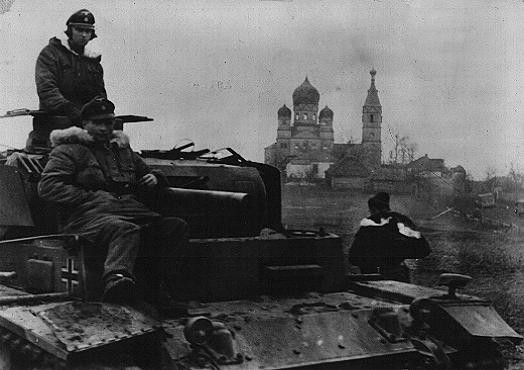
After Stalingrad, Soviet forces remained on the offensive for the remainder of the war, despite some temporary setbacks. A last German offensive at Kursk failed in the summer of 1943. The Soviets pushed the Germans back to the banks of the Dnieper River in 1943 and then, by the summer of 1944, to the borders of East Prussia. In January 1945, a new offensive brought Soviet forces to the banks of the Oder, in eastern Germany.
The Battle of Berlin and the Surrender of Germany
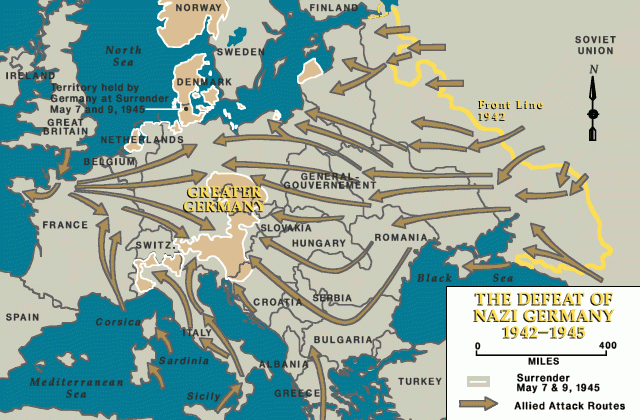
From their bridgehead across the Oder River, Soviet forces launched a massive final offensive toward Berlin in mid-April 1945. The German capital was encircled on April 25. That same day, Soviet forces linked up with their American counterparts attacking from the west at Torgau, on the Elbe River in central Germany. In Berlin itself, heavy fighting took place in the northern and southern suburbs of the city.
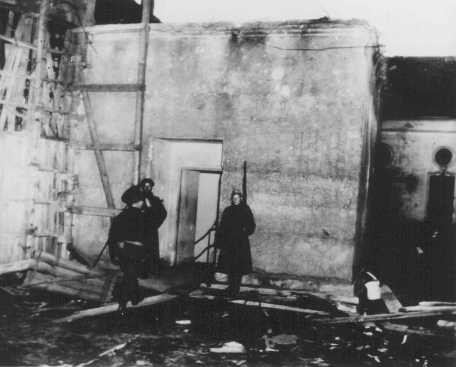
As Soviet forces neared his command bunker in central Berlin on April 30, 1945, Adolf Hitler committed suicide. Within days, Berlin fell to the Soviets. The German armed forces surrendered unconditionally in the west on May 7 and in the east on May 9, 1945. May 8, 1945, was proclaimed Victory in Europe Day (V-E Day).
Critical Thinking Questions
- What plans did Nazi Germany have for eastern Europe?
- What was the relationship between the progress of the war and the mass murder of Europe’s Jews?

